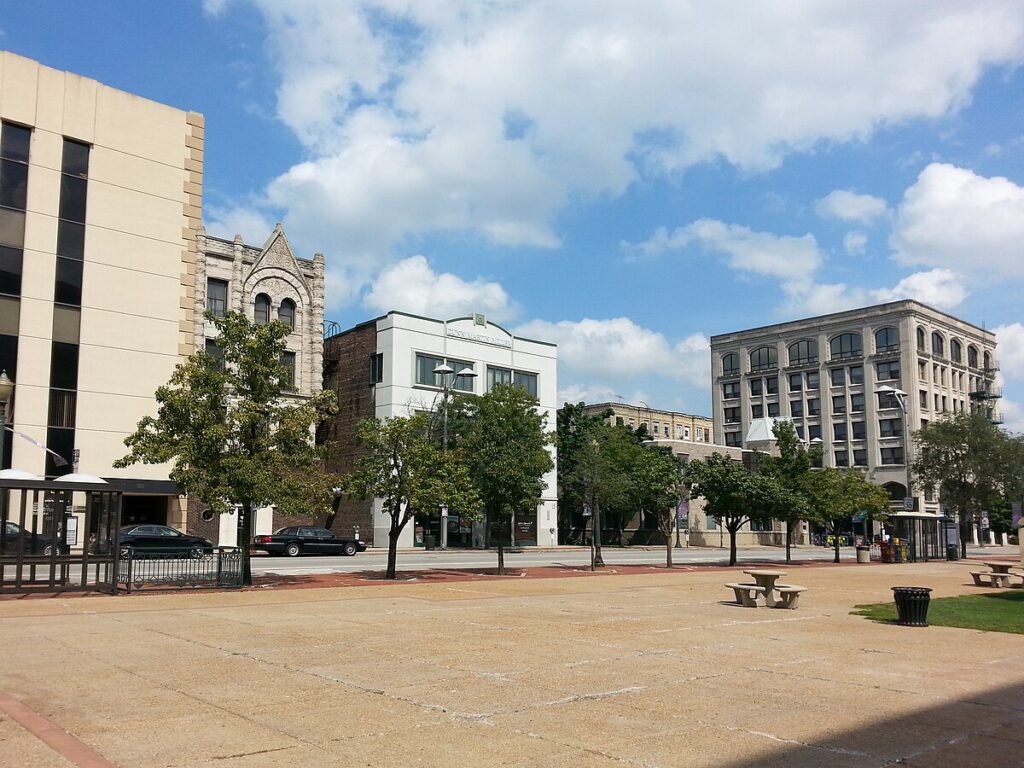
Moving to Joliet, Illinois: A Comprehensive Relocation Guide
Considering moving to Joliet, Illinois? This growing Will County city offers affordable living, convenient location, and diverse community. With approximately 150,000 residents in 2025, Joliet combines working-class character with explosive growth and Southwest Chicagoland’s largest city.
Demographic Profile to Consider If Moving to Joliet:
Joliet’s 2025 population is approximately 150,000 residents, making it Illinois’ third-largest city experiencing significant growth. The median age is around 34 years, with diverse working families, Hispanic residents, and young adults. The population is approximately 48% White, 30% Hispanic, 18% Black or African American, 3% Asian. Joliet features historic downtown, extensive suburban development, two casinos (Harrah’s and Hollywood), and serves as Will County’s largest city. The city attracts diverse families seeking affordability, working-class residents, and those wanting Southwest suburbs access with lower costs. Joliet appeals to diverse income levels prioritizing value and accessibility. The community balances historic character with rapid growth and increasing diversity. Find trusted local services for moving, living, and working in Joliet.Joliet Relocation Directory
Cost of Living to Consider If Moving to Joliet:
Joliet offers exceptional affordability for Chicagoland. Median home values range from $220,000 to $310,000 in 2025, significantly lower than inner suburbs while providing metropolitan access. The median household income is approximately $68,000. Rental properties average $1,200 to $1,700 monthly. Illinois’ state income tax is flat 4.95%. Property taxes are moderate (lower than Cook County). Overall cost of living is very competitive for Chicago access, making Joliet highly attractive for first-time buyers, working families, and those seeking maximum affordability. The city provides tremendous value with highway access. Housing costs create exceptional accessibility for diverse income levels.
Economy and Job Market:
Joliet’s economy includes logistics, healthcare, gaming, retail, and manufacturing. Major employers include Harrah’s Joliet Casino, Hollywood Casino, AMITA Health Saint Joseph Medical Center, Silver Cross Hospital, massive distribution centers capitalizing on I-80/I-55 crossroads location, and manufacturing facilities. The strategic transportation location attracts logistics employment. Many residents commute to Chicago or work throughout the Southwest suburbs. The broader Chicagoland economy offers opportunities. Typical commute times to Chicago range 50-75 minutes. The diverse economy provides opportunities across sectors. Many residents work in logistics, healthcare, gaming, services, and trades.
Education:
Joliet Public Schools District 86 and Joliet Township High School District 204 serve city students with schools including Joliet Central High School, Joliet West High School, and Joliet East Alternative Education. School quality varies significantly requiring extensive family research. Joliet Junior College provides community college programs. The University of St. Francis offers four-year degrees. The educational infrastructure serves the large, diverse population with quality varying considerably by school and area.
Recreation and Lifestyle:
Joliet offers Chicagoland Speedway and Route 66 Raceway attracting motorsports fans, two casinos providing gaming and entertainment, historic downtown along Chicago Street with Route 66 heritage (Joliet is on historic Route 66), and the Rialto Square Theatre (stunning historic venue). The I&M Canal provides recreation. Residents enjoy Pilcher Park and forest preserves. The lifestyle emphasizes affordable family living, diverse culture, entertainment options, and Southwest suburbs accessibility. The four-season climate enables varied activities. The community values diversity, affordability, Route 66 heritage, and working-class character. Living in Joliet means choosing maximum affordability, embracing working-class and diverse character, accepting longer commutes, and potential urban challenges while enjoying Southwest Chicagoland’s most affordable large city with casino entertainment, motorsports, and exceptional value creating opportunities for diverse families and first-time buyers.
Healthcare and Services:
Joliet residents access comprehensive healthcare through AMITA Health Saint Joseph Medical Center, Silver Cross Hospital, Presence Saint Joseph Medical Center, and facilities throughout Will County. The concentration of hospitals serves as a regional healthcare hub.
Transportation:
Joliet is accessed via Interstate 80, Interstate 55, Interstate 355, U.S. Route 6, and various corridors at a major transportation crossroads. Metra Rock Island District and Heritage Corridor lines provide train service to Chicago from Joliet stations. Pace operates suburban bus routes. Most residents use personal vehicles. Typical commute times to Chicago via Metra are 60-80 minutes, by car 50-90 minutes depending on traffic.
Conclusion:
Moving to Joliet in 2025 offers affordable Southwest living with diverse community, entertainment options, and convenient location. The city’s combination of low housing costs, casino gaming, motorsports, and Route 66 heritage makes it ideal for working families, first-time buyers, and diverse residents seeking Chicagoland’s most affordable large city where value meets accessibility and diversity defines Illinois’ rapidly growing third city.

